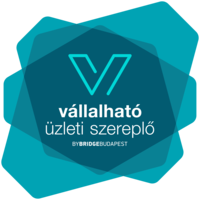Alias Blog
How a Marketing Agency Scales: Implementing a ClickUp-based CRM
How did a custom ClickUp-based CRM implementation help sort out the software chaos at a marketing agency?
ClickUp as an ERP System? It's Possible with Low-Code Tools!
Learn how to build a custom ERP system with the ClickUp + n8n duo. Low-code integration is a flexible alternative to expensive ERP software.
Our new finance assistant is a robot: how ClickUp and n8n work for us.
Anyone who runs an agency or consulting firm knows that the work doesn’t end with project delivery. In fact, that’s often when another, less-loved chapter begins: administration. Certificates of delivery, reports, emails, invoicing, and tracking payments. Read how we automated these processes with ClickUp and n8n's low code system.
Does it worth to save €2000 annually on communication? Part II.
At Alias, we constantly strive to improve our workflows while keeping costs under control. When it came to internal communication, we knew transitioning from Slack to an open-source solution would be a challenge—but also an opportunity.
In this follow-up blog post, we dive into the specifics of how we evaluated Mattermost, migrated our data, and adapted to a self-hosted platform. We share the hurdles we faced, the solutions we implemented, and the lessons we learned along the way. Whether you’re considering a similar transition or just curious about the process, this is a journey worth exploring.
Does it worth to save €2000 annually on communication? Part I.
At Alias, we place a strong emphasis on effective internal communication, and this requires using the right software tools. However, as a company scales, the increasing costs of multiple software subscriptions can become burdensome.
In our blog post, we explain why we chose the open-source Mattermost platform to modernize our internal communication and reduce costs compared to Slack. We detail the advantages of open-source projects, such as cost-effectiveness, flexibility, community support, and innovation. In Mattermost, we found all the features we had come to expect from Slack, plus it is backed by a stable community that regularly updates and supports the application.
The Future of Energy Supply
This post is a continuation of our article on European energy policy and the state of renewable energies. If you haven't read it yet, you can do so at this link.
In the greening of energy, the most significant role within the energy strategy is played by the RED, or Renewable Energy Directive. This directive sets detailed rules for various sectors, such as construction, biomass management, and energy research. In this article, we focus more specifically on the integration of energy systems and the renewable hydrogen strategy.
Of course, these ambitious plans come with numerous challenges that require the establishment of a robust IT system for solutions.
On European Energy Policy and the State of Renewable Energy
Alias Innovation's activities are closely tied to the energy industry, particularly renewable energies (mainly biogas), as we have developed a specific software for this sector and will continue to focus on this market in the future.
The European energy market and its regulation are quite complex, with various decrees and directives that are not easy to navigate. Therefore, in the following two articles, we aim to make all this more understandable. In our first article, we will review the general energy policy and its regulation, while in the second, we will focus on the regulation of renewable energy in a narrower sense.
The hour of judgement: the performance review
The following is a continuation of our article The Four-Day Work Schedule, if you haven't read it yet, you can do so at this link.
In this article, we detail the concrete results of the introduction of the four-day working week, supplemented by feedback from employees. Spoiler: we stick to the four-day working week!
The four-day working week
Work-life balance has become an explicit focus for most employees in the process of choosing a job. Businesses can address this need in a number of ways, such as flexible working hours or home office options. But so is the introduction of a four-day working week.
In our next blog post, we will look at the origins and current uptake of the four-day working week, but also the considerations that led us at Alias Innovations to switch to this working pattern.
If you want to know the background to the four-day working week and how it should be introduced, read on!
Sustainable IT
Sustainability is an essential aspect of many areas of our lives and IT is no exception. However, while most of us take care to separate waste or use public transport instead of the car, this approach is less visible and less entrenched in IT. It is therefore important to devote a few paragraphs to sustainable IT.
The following will expand on the concept of sustainable IT, address the concrete steps (energy efficiency, green coding, sustainable procurement, etc.) and how Alias Innovation implements these aspects in its own activities.
If you're curious about a quick introduction to sustainable IT, read on!











